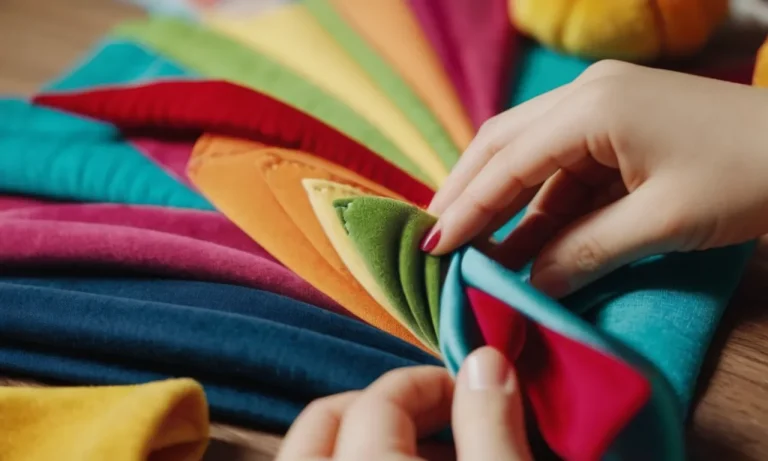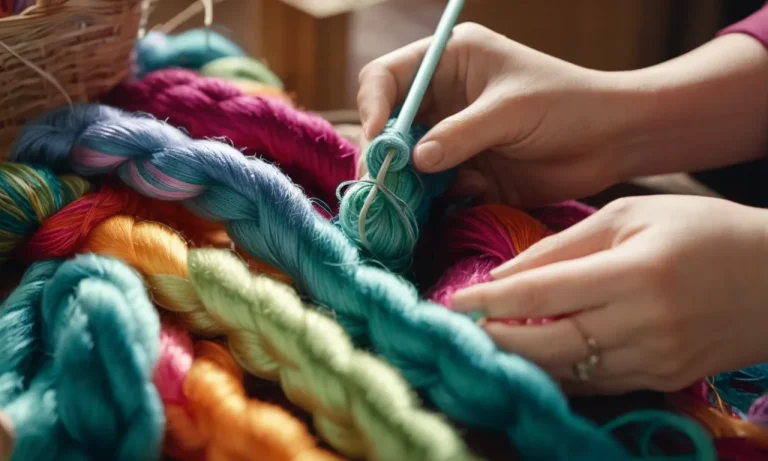Seeing blood on your beloved stuffed animal can be upsetting. However, with some effort, you can likely remove the stain and restore the toy. If speed is important, try soaking the stain right away in an enzymatic cleaner or baking soda solution.
In this comprehensive guide, we provide detailed instructions for getting blood out of plush toys. We cover everything from acting quickly when first noticing the stain to trying more advanced stain removal methods if needed.
Act Quickly When You Notice the Stain
When your favorite stuffed animal unexpectedly becomes the victim of a bloody nose or other accident, it’s important to act swiftly. The sooner you can treat the stain, the better your chances of being able to remove it completely.
Don’t panic though – with some basic cleaning methods, you can often rescue even heavily soiled plush toys.
Blot with Cold Water and Avoid Scrubbing
Your first instinct might be to scrub aggressively at a bloody stain, but this can actually make things worse by grinding the offending substance further into the fabric. Instead, gently dab at the area with a cloth, paper towel, or clean sponge dampened with cold water.
This will help lift the blood away from the fibers. Repeated light blotting is better than heavy scrubbing. 👍
It’s also best to avoid hot water, as heat can set protein-based stains like blood. Stick to cool or cold water. And make sure to blot, not rub – rubbing can spread the stain around and damage delicate materials like faux fur or plush fabrics often used for stuffed toys.
Apply an Enzyme Cleaner or Baking Soda Paste
After blotting up any excess moisture from the toy, try applying an enzymatic cleaner specifically designed for organic stains like blood and food. These use natural enzymes to help break down and dissolve the bonds in proteins and lipids that make up difficult stains.
Or create your own cleaner by mixing a paste of baking soda and cold water. Let it sit for a few minutes before blotting and rinsing.
According to cleaning experts, baking soda and enzymatic cleaners can be highly effective at removing set-in stains on plush materials. The key is allowing time for the active ingredients to work at dissolving the offending blotch before attempting to wash it out.
You can find enzymatic cleaners online or in stores like Target and Walmart for around $5-10. Arm & Hammer makes a popular one called Pet Fresh carpet spray that also helps eliminate odors.
Try the Washing Machine for Light Stains
If your stuffed animal has a light stain that covers a small area, the washing machine is a great first option. Choose a gentle cycle with cold water to help loosen the stain without damaging the fabric or stuffing.
Check the Tag
Before washing, always check the care tag on your stuffed animal. This will indicate if machine washing is safe or if handwashing is recommended. Most modern stuffed animals are machine washable, but vintage or delicate toys may require special care.
Use a Gentle Detergent
Choose a gentle, dye-free detergent formulated for delicates or baby clothes. Powder detergents tend to work better than liquid for lifting stains. Avoid regular detergents with brighteners or bleach as these can be too harsh.
Use the amount recommended on the detergent bottle since too much soap residue can be difficult to rinse out.
Wash Separately
Wash your stained stuffed friend by itself to prevent any loose dye from transferring to other items. Avoid washing it with non-colorfast fabrics as this can create a bigger problem!
Air Dry
After washing, gently squeeze out excess water and air dry your stuffed pal. Lay it flat on top of a towel and reshape any matted fur or stuffing. Do not place it into the dryer as high heat can damage materials commonly used in stuffed toys.
Once fully dry, check if the light stain has lifted after one wash cycle. If traces of the stain remain, do not dry it again. Simply run it through the gentle wash cycle once more before air drying.
With a bit of care and patience, your favorite snuggle buddy will be good as new. Just be sure to catch stains early before they have a chance to set!
Use Advanced Stain Removers for Difficult Stains
Some stuffed animal stains can be stubborn and require more powerful cleaning solutions. If dish soap, vinegar, or hydrogen peroxide don’t get the job done, try one of these advanced stain removers:
Soak in Hydrogen Peroxide or Oxyclean
Hydrogen peroxide and Oxyclean are excellent at breaking down and lifting stain residues. Make a concentrated soak solution – for Oxyclean, use 1-2 scoops per gallon of warm water. For hydrogen peroxide, mix equal parts with water.
Submerge the stuffed animal and let it soak for at least 30 minutes up to a few hours if needed.
Try Salon Care 40 Volume Creme Developer
This product contains a high concentration of hydrogen peroxide and is commonly used in beauty salons to process hair color. The key is to avoid over-soaking the stuffed animal. Mix a dilute solution of 1 part Salon Care 40 with 4 parts water. Soak for 10-20 minutes, checking often.
Use Meat Tenderizer Containing Papain
Papain is an enzyme found in meat tenderizers that breaks down protein-based stains like blood, food, and sweat. Mix 1-2 tbsp of meat tenderizer powder with enough warm water to make a paste-like solution. Carefully dab it onto the stained area, wait 5-10 minutes, then rinse.
Rub with BAR KEEPERS FRIEND Cleanser
Bar Keepers Friend is a highly effective abrasive cleanser for tough stains. Make a paste with a small amount of powder and a few drops of water. Gently rub it into the stain using a soft-bristled toothbrush, rinse, and repeat if needed. This works well on older, set-in stains.
When using any of these strong stain removers, test first in an inconspicuous area to ensure colorfastness. Avoid over-soaking, rinsing frequently to prevent damage. With some effort, you can likely get even the toughest stuffed animal stains out!
For more tips, see the Real Simple and Clean and Scentsible guides on cleaning stuffed animals.
Prevent Re-Staining After Cleaning
After putting in the effort to clean the blood stains out of your stuffed animal, the last thing you want is for the stains to reappear. Here are some tips to help prevent blood stains from returning on your beloved plush toy after cleaning:
Allow Sufficient Drying Time
It’s important not to rush the drying process. Even if your stuffed animal looks clean and dry on the outside, there could still be moisture deeper in the stuffing or fabric that needs more time to fully dry out.
Allow at least 24-48 hours of drying time in a well-ventilated area before putting your plush toy back into use or storage.
Use a Stain Resistant Spray
Applying a stain resistant spray after cleaning can help create a protective barrier to prevent future stains. There are sprays made specifically for use on stuffed toys and plush fabrics. Check the label to make sure the spray you choose is safe for your type of toy.
Wash Regularly
If your stuffed animal tends to get frequent light staining from things like food, dirt, etc., washing it regularly can help prevent stains from setting and becoming more stubborn over time. For toys that are machine washable, launder them once a month or whenever they start to look dingy.
Spot Clean After Each Use
Get in the habit of spot cleaning your stuffed animals after your child plays with them or brings them places where they could get dirty. Using a small amount of mild detergent and a clean, soft cloth, gently blot any visible stains. This quick cleaning helps prevent stains from becoming permanent.
Check Stuffing for Retained Moisture
Even if the outer fabric of your stuffed toy appears dry after washing, moisture can linger in the inner stuffing. Feel the stuffing by squeezing different parts of the toy to check for any dampness. If you find retained moisture, use clean paper towels or soft cloths to blot the area.
Allow extra drying time and repeat the checking/blotting process until all interior stuffing feels completely dry.
Use Moisture-Wicking Storage Containers
For stuffed toys that aren’t frequently used, storing them in breathable containers with moisture-wicking properties can help prevent musty odors or stain-causing mildew growth. Some good options are cotton canvas bins, woven baskets, or fabric toy hammocks.
Be sure to check stored toys periodically and allow them to air out if any mildew smell develops.
Store in Cool, Dry Area
Moisture and heat create optimal conditions for stains, odors, and mildew growth. Help stuffed animals stay fresh and stain-free by storing them in a clean, dry area away from direct heat sources or humid environments. An optimal storage temperature is around 65-75°F.
By allowing ample drying time, regularly cleaning, moisture-checking stuffing, and proper storage methods, you can help prevent those pesky blood stains from returning on your beloved plush pals. With some diligence about ongoing care, you should be able to keep them looking fluffy and fabulous.
When to Give Up and Cover Up the Stain
There comes a time when even the most stubborn stains have overstayed their welcome. If you’ve tried every trick and home remedy with no success, it may be time to consider covering up that pesky splotch.
After Multiple Attempts
If you’ve made three or more honest attempts at removing the stain using different techniques and cleaning solutions, the stain likely requires more powerful solvents to lift. Since dousing a stuffed animal in harsh chemicals isn’t advised, this would be the time to explore concealment options.
When the Fabric is Fragile
Vintage stuffed animals or those made from delicate materials like silk or cashmere shouldn’t undergo aggressive stain removal methods which could damage the fabric. Attempting stain treatments could harm the structural integrity, so hiding spots is the wise path forward to preserve the stuffed friend.
If the Stain Has Set
Stuck in place stains that have bonded with the fibers despite your valiant efforts pose quite the challenge. Rather than continuing the fight against the unrelenting stain, creatively disguising it saves the time and frustration. Outsmart that obstinate splotch by implementing clever concealment!
Knowing when to wave the white flag is key before causing irreparable harm to beloved stuffies. Strategic concealment lets you preserve the snuggly companion while concealing those irksome stains. With a bit of innovation and the right materials, your cute plush pals can be restored to their former cuddle-worthy glory!
Conclusion
We hope this guide gave you everything you need to know to lift blood from a beloved stuffed animal. Just remember – act quickly when first noticing the stain, and don’t be afraid to try more advanced cleaners if needed.
With some time and effort, you have an excellent chance of removing the stain and keeping your plush toy looking good as new.







